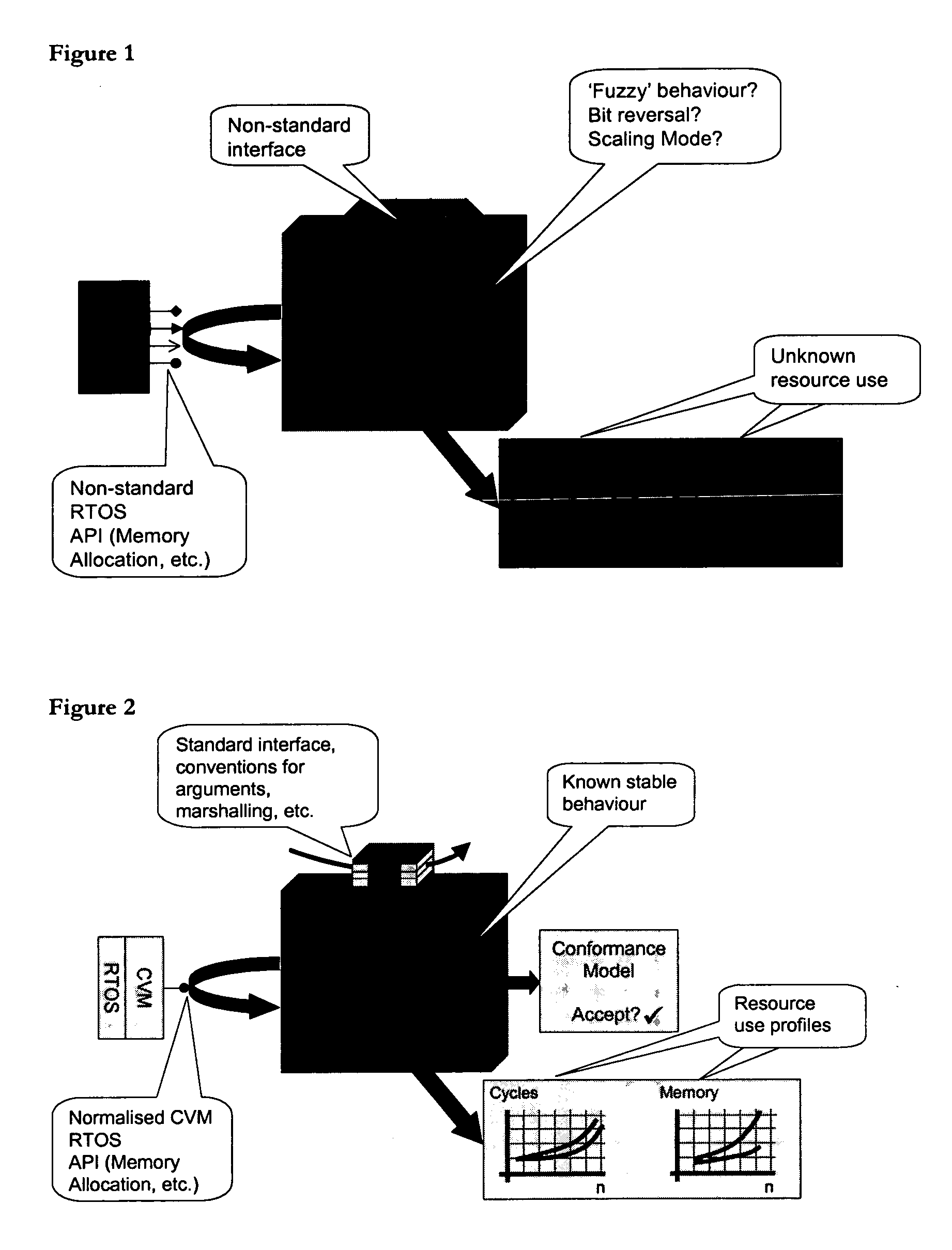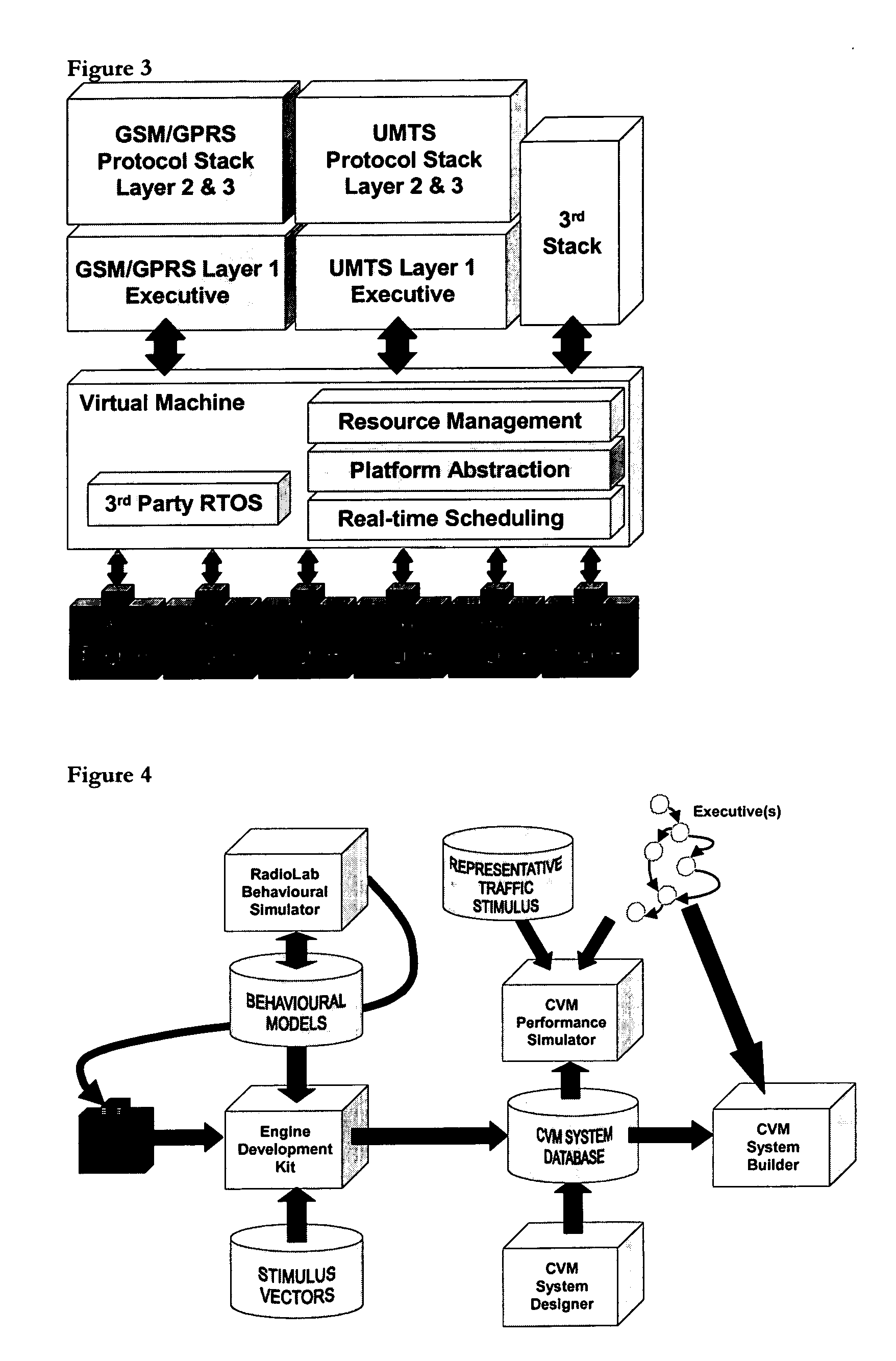Method of testing components designed to perform real-time, high resource functions
a technology of components and functions, applied in the direction of program control, specific program execution arrangements, program initiation/switching, etc., can solve the problems of inability to meet the requirements of radio frequency frequency synchronization, and inability to meet the requirements of radio frequency synchronization
- Summary
- Abstract
- Description
- Claims
- Application Information
AI Technical Summary
Benefits of technology
Problems solved by technology
Method used
Image
Examples
Embodiment Construction
1. Overview of the Communication Virtual Machine (CVM)
[0046] The CVM is a combination of run-time middleware and design-time tools that together help users implement a development paradigm for complex communication stacks.
[0047] The underlying conceptual model for CVM is as follows. We assume that a communication stack (particularly at layer 1) may be decomposed into: [0048] High-resource, largely-application-neutral components, which will probably be implemented either in dedicated hardware or in highly platform-optimised software. These we call engines, and examples would be: FFT, FIR filter, vector multiply, etc. In the general case (where the particular CVM engine constraints are not met), we refer to such blocks as high-resource functions, or HRFs. [0049] Low-resource, largely application-specific components, which will probably contain nothing that inherently binds them to a particular underlying hardware substrate. These we call executives, and examples would be the overal...
PUM
 Login to View More
Login to View More Abstract
Description
Claims
Application Information
 Login to View More
Login to View More - R&D
- Intellectual Property
- Life Sciences
- Materials
- Tech Scout
- Unparalleled Data Quality
- Higher Quality Content
- 60% Fewer Hallucinations
Browse by: Latest US Patents, China's latest patents, Technical Efficacy Thesaurus, Application Domain, Technology Topic, Popular Technical Reports.
© 2025 PatSnap. All rights reserved.Legal|Privacy policy|Modern Slavery Act Transparency Statement|Sitemap|About US| Contact US: help@patsnap.com



